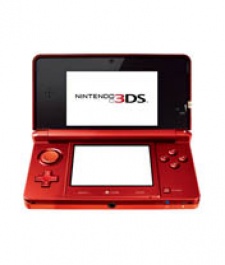Outside of my professional life, I've been far from complimentary about 3DS ever since it was first unveiled.
It's a stance that has led to quite a number of heated conversations each one usually ending with the assertion that I'm way off base and don't know what I'm talking about.
They may well be right, though I have a feeling that most such debates arise because we're talking at cross-purposes.
The bone of contention is that I don't consider 3D to be all too much of an innovation. For Nintendo, which so famously pushed boundaries with the release of both the original DS and Wii, simply strapping on 3D to what is largely the same model it employed with its predecessor seems especially lazy.
Eye of the beholder
That's not to say that the tech behind the move isn't especially impressive on a purely practical level, that certainly qualifies as innovative.
As a marketing tool, also, to be able to boast that the platform features glasses-less 3D in the current climate is pure gold. Launch day figures alone are enough to suggest that, for the moment at least, the "it prints money" tag Nintendo has picked up in previous years is just as applicable now.
But the astounding success DS has enjoyed since its launch in 2004 has arguably clouded our vision as to why it was so revolutionary in the first place.
At the time, Sony's accession to the top of the handheld tree had long been pitched as inevitable in some quarters of the press. The PlayStation brand had enjoyed nothing but massive success at that stage, and few could see anything but Sony expanding its dominance into the portable arena.
Nintendo's DS was to be little more than a sideshow the odd nature of its design, and the frankly cheap feel of the original model leading many to question whether Nintendo's days as a major force were numbered.
In the end, it was the original nature of its form the two screens, the stylus that resulted both in an initial creative explosion when it came to the platform's software (I still maintain that Brain Training/Brain Age is the most important handheld series to have launched in recent history), and the ability for the console to embrace the mainstream.
People played on it, and they wanted it. Despite launching with supposedly better specs, a flash marketing campaign and the power of the PlayStation name, in comparison, it instantly made PSP look archaic, old fashioned, and quite literally out of touch.
Following up perfection
Now, I'm not suggesting that Nintendo could or should have gone back to the drawing board with DS's successor, designing a handheld that featured six screens, or one that attempted to tap into your brain waves as a form of control, but equally, I cannot pretend to be anything but disappointed with what 3DS represents.
To my mind, away from home consoles, 3D serves no great creative purpose when it comes to handheld gaming. In general, I'm anything but a fan of 3D technology - 3D films, for instance, have left me both scratching my head and attending to the inevitable throb that kicks off half way through the picture at the same time.
However, I won't deny that there's a role for it when it comes to certain forms of media. Sony's 3D implementation with PS3, for instance, seems as wise as it is appropriate, with the firm looking to reserve the technology for the big blockbusters that set out to be a spectacle.
But in the same way as I wouldn't want to watch EastEnders in 3D the ultimately mundane, day-to-day nature sapping away any sense of occasion whatsoever the thought of playing the same breed of games that popped up on DS, but this time in 3D, has no real appeal.
The big boys aside, I don't think developers are all too enthused on a creative level, either.
Hardware hard lessons
For me, it's the equivalent of strapping a spoiler onto the back of a sports car: there's an initial visual upgrade involved, but on a practical level, nothing much changes.
Most crucially, however, 3DS represents Nintendo falling back on the traditional industry model when it comes to launching new hardware.
While both DS and Wii offered consumers something completely different, putting renewed user interaction far in advance of any desire for souped up hardware, 3DS offers much the same set up as its predecessor, albeit with additional graphical prowess.
That's exactly what Xbox 360 represents, what PS3 represents, and what NGP looks like it'll represent, too. In fact, almost every single follow-up console you can think of set out its stall by attempting to offer consumers more of the same, but with the added bonus of more powerful hardware inside its casing.
Things, of course, are very different for Nintendo now. While both DS and Wii were born into a world where the likes of GameCube had left Nintendo trailing its rivals the firm given the freedom to take risks as a result it now finds itself having to defend its market leading position from all sides.
When you're at the top, the prospect of gambling with your future is much less appetising.
3DS is the result of such thinking a stable, safe product that looks to keep the ball rolling whilst also proffering a 'wow' factor. The problem is, by putting its focus on visuals, Nintendo appears to be reacting to the threat of PSP and NGP.
In reality, it's the app-happy culture of smartphones, currently flush with innovation in spades (and cheap with it), that is now the greatest threat to Nintendo's dominance, and it remains to be seen whether 3DS is fully equipped to deal with that in the years to come.
Opinion: Early 3DS sales surge papers over a console devoid of innovation
Handheld far too safe to deal with smartphone threat





















